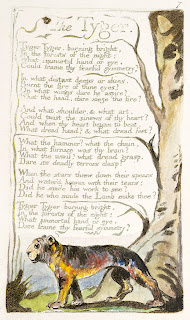Here are some thoughts on expanding the rules in Holmes Basic, imagining how someone with only that rulebook might plot out class info beyond level 3.
XP and Levels
There's no evidence in Holmes alone that the XP charts double each level. A totally legit reading is that Fighters need 2,000 points for each new level, M-U's 2,500 and Thieves 1,200. Example:
Fighter XP Chart
Level - XP Needed
1 - 0xp
2 - 2,000xp
3 - 4,000xp
4 - 6,000xp
5 - 8,000xp
6 - 10,000xp
7 - 12,000xp
etc.
Hit Points
No topping out. Add one hit die every level, forever.
Thief Abilities
Climb sheer surfaces +1% per level up to 99%.
Open lock, remove trap, pick pocket, hide in shadows all gain +5% per level until 85% is reached, +1% per level thereafter up to 99%.
Hear noise 1-3 on d6 for levels 4-5, 1-4 on d6 for levels 6-9, 1-5 on d6 for level 10-14, 88% at level 15 and +1% per level thereafter up to 99%.
There's nothing to suggest that read languages ever goes up past the 80% you get at 4th level but I suppose you could follow the other percentile abilities and go to 85% at level 5 and +1% thereafter until 99%.
Whether you advance read languages or not, under this scheme all thief abilities would top out at 30th level.
Turn Undead
Expanding the chart is an easy extrapolation. Note that a cleric of 9th level and above can automatically turn all listed forms of undead.
To Hit Charts
Anybody else annoyed that a 2 hitdie monster has +1 to-hit over a 2nd level Fighter? Shouldn't they be on par? But that doesn't matter in this exercise since I'm building from established rules rather than trying to innovate.
Idea #1 is that since all characters level 1 to 3 have the same to-hit chart, everyone gets better to hits every three levels. Fighters get +2 to-hit at levels 4, 7, 10, 13 and 16. Magic-users get +1 at the same levels. Other classes alternate between +1 and +2 pushes, getting the small bonus at 4, 10, 16 and the large bonus at 7 and 13. The best possible to hit is Thaco 9, just like monsters of 11+ HD.
Idea #2 riffs off a throwaway line on page 6 of the rulebook (3rd edition, Dec '79), in the section detailing Fighters: "After they reach the fourth level of experience they also increase their ability to get hits on an opponent." I think this is a reference to the multiple attack rules in AD&D, and the source of the mysterious multiple attack non-rules in
Encounter Critical. But we could read it as an indication that
only the Fighter class gets better to-hits! Maybe everybody else just stays at Thaco 19 their entire career.
If we don't use Idea #2 here then we need to figure out what "to get hits on an opponent" means, because this is apparently an exclusive Fighter ability. Since Holmes does not variable weapon damage, howzabout increasing the size of the fighter's damage die? At fourth level all weapons in the hands of a fighter do d8 damage. At 7th it becomes d10 and at 10th damage would increase to d12. Fighters of 13th level and above would do d20 damage with their weapons. Or give out additional d6s. 2d6 at 4th, 3d6 at 7th, etc. I kinda lean toward the latter, as it could allow individual dice to be directed at different foes (an EPT style sweep attack, in effect).
Saving Throws
I think the simple thing to do here is to take a hint from Idea #1 above and give a bonus at every three levels gained. +1 to all saves at 4, 7, 10, 13, etc., regardless of class.
Spells
This is probably the hardest part to tackle. Here are the known facts:
- We have a list of known third level MU spells (p14 bottom of 1st column), but no write-ups for them.
- MUs of fifth level and above can cast 3rd level spells (last paragraph, page 16).
- Clerics of 4th level and above can use the listed 2nd level spells (1st paragraph, page 17).
- The 4th level MU in the sample adventure makes no sense to me. He 'knows' 4 first and 2 second level spells. Either he way's got too few spells in his spellbook for his Int 16 or else the implication is that going from 3rd to 4th changes your spell output from 2/1 to 4/2. I wasn't thinking about this aberrant dude when I wrote my draft MU charts. Incorporating that datum would totally screw with my "Your level = Your Number of Spells" symmetry. Here's a draft revision base upon this line of thought, but I'm not sure it really helps my game. I don't normally assume NPCs wizard follow the exact same rules as the PCs anyway, so it's probably better just to write off that dude as an outlier.
- The first paragraph of the section labeled "Magic Spells" (starting on page 13) mentions in passing the existence of a 5th level that will conjure a water elemental. How many spell levels does the game need? I've gotten through a crapload of games where no caster every got past the ability to throw spells in the 3-5 range, so I have trouble believing that spells of level 9 or more are really necessary to the game. OD&D's six spell levels seems quite sufficient. In fact I've got a spreadsheet I've been working on that so far contains about 130 new spells (levels 1 to 6) in it, written specifically with this campaign in mind. I somehow managed to include a 5th level water elemental conjuration (the '3rd Enchantment of Azariel') before I even decided to use the Holmes rules. Nice how that works out.
Somebody else will have to work out clerical spells. I just don't care. I only tackled turning undead above because Turn Undead is a standard MU spell in my campaign, as per Ultima IV.














































































































































































.JPG)



































.png)

.png)

.jpg)





















.gif)






